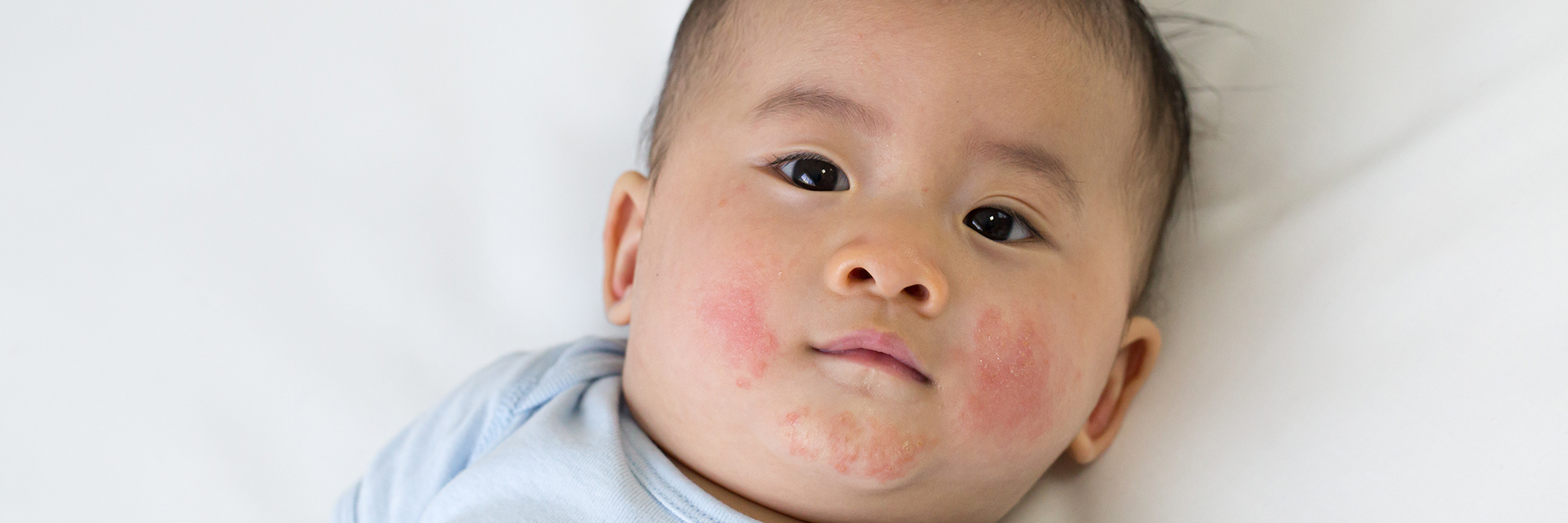The velvety soft skin of your baby may sometimes show signs of a bumpy rash. Most young children experience rashes that go away on their own. In some cases, however, they require treatment. It’s important to know what you’re up against!
Babies can develop a host of marks on their little bodies, including:
- Milia – These small white spots on a baby’s nose, cheeks and chin are just blocked oil glands that will go away on their own in a few weeks.
- “Baby acne” – These pimple-like spots will come and go in the first few months.
- Heat rash – This usually appears as clusters of small, red bumps that look a little like pimples or blisters. They can show up on your baby’s face, neck, arms, legs and chest. Dress your baby in clothing that stays cool and dry to avoid a heat rash.
- Diaper rash – red, inflamed skin in the diaper area. Air, frequent diaper changes, applying a thick barrier paste (zinc oxide, petrolatum products are good) to the area can all help. Some rashes can be bacterial or other types of infection, so check with your baby’s doctor if you aren’t sure.
When to Call the Doctor
Rashes that require additional treatment are often accompanied by other symptoms, typically itching or fever. It’s a good idea to check with your child’s healthcare provider about any of the below rashes.
Rashes that itch include:
- Eczema – dry, red, cracked skin often appearing at the creases in knees or elbows. It’s usually treated with corticosteroid creams.
- Ringworm – a fungal skin infection often appearing on the scalp, feet and groin. Treated with over-the-counter antifungal creams.
- Impetigo – a rash that shows up as red sores or blisters with a yellow crust. Your baby’s doctor may prescribe an antibiotic cream for this bacterial infection.
Rashes accompanied by fever include:
- Fifth disease – often called “slapped cheek syndrome.” This red blotchy rash is a viral infection. Rest and plenty of fluids will help resolve it.
- Hand, foot and mouth disease – painful mouth sores, sore throat and reduced appetite are common symptoms. Though highly contagious, this is a viral infection, which means you can really only treat the symptoms.
- Roseola – usually shows up as a sudden high fever accompanied by a pinkish-red rash on the child’s trunk. Lowering the fever is the main treatment.
Proper hygiene and lots of hand washing can go a long way toward combating these rashes. If your child develops eczema, check with the doctor about any foods or skin irritants your little one should avoid. If you’re unsure about a rash or accompanying symptoms, always consult with the doctor.
See also ...
• Common diaper rashes and treatments
This message is not intended to provide individual medical advice. Always seek the advice of a physician or qualified healthcare provider for any questions you have about your health or medical condition, your breastfeeding issues and your infant's health. Never disregard, avoid or delay contacting a doctor or other qualified professional because of something you have read in our emails, webpages or other electronic communications.
Powered by UbiCare

